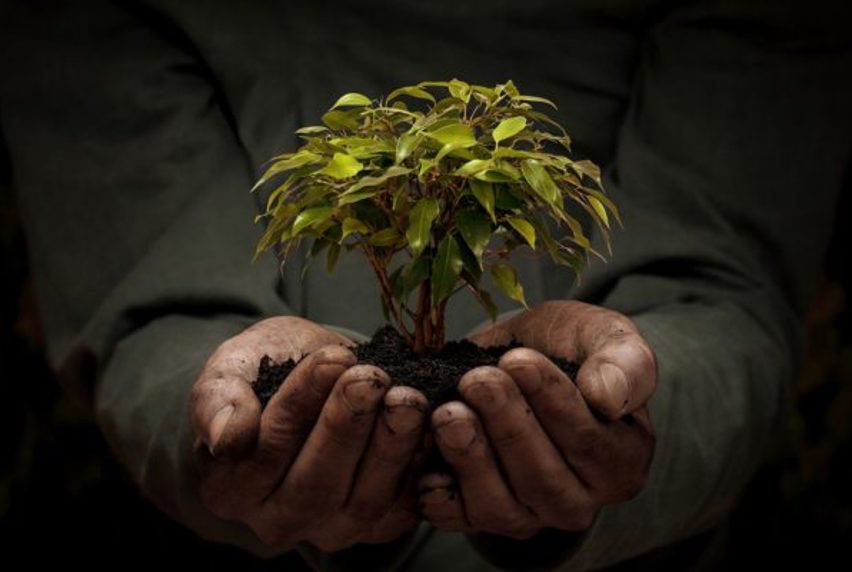Creating a Career in the Great Outdoors

It’s a beautiful sunny day and you can’t bear the thought of being inside. Sitting still makes you twitchy, you’re much happier when you’re moving. Or you’re lost in thought in an open space of flat cleared earth, seeing a blank canvas ready to be filled with life.
If any of this sounds familiar, a career in landscape construction and design could be for you.
Melbourne Polytechnic landscape teacher Tim Wilson understands perfectly well that office jobs are not for everyone and many people are made to be outside: ‘The thought of working in an office is like kryptonite to Superman,’ he says.
He didn’t like the factory environment when he started out as an apprentice shopfitter.
Find the freedom
‘I left that and I’ve worked outside pretty much most of my working life,’ he says. ‘What I’ve found is it gives you a sense of freedom, you don’t feel contained. Nothing’s restricting your line of sight.
‘Because you have constant contact with the environment you have a natural affinity with it and an appreciation for it and you do also notice anecdotally changes in the environment around you.
Tim suggests people considering a career outdoors think about whether they want to and are able to do manual work, and if so, what sort of manual work.
Seasonal alignment
‘You align yourself with the seasons as well and you become attuned to the seasons, that also impacts on the way you go about work.’ There’s a whole raft of different careers that involve being outside: carpentry, plumbing, electrical.
Then there’s landscaping – construction or design, areas of expertise that are in high demand in Melbourne right now.
Landscape construction involves putting a landscape design into reality, from paper to the environment. There are a whole range of skill sets within landscape construction, from irrigation, drainage through to retaining walls, paving, concreting, stone structures, plants, soil, water features. It’s about 80% outdoors work, 20% indoors.
Landscape design is the reverse, about 80% inside, 20% outside for the project management aspect of the job.
Flexible learning
Certificate III Landscape Construction students can do an apprenticeship and go to Melbourne Polytechnic one day a week for three years. Non-apprentices, such as career changers, can take the classes two nights a week.
The job prospects are very good, they ‘can’t get enough people. We would get a call every two to three weeks from employers looking for apprentices or labourers, the industry is really buoyant,’ Tim says.
In-demand career
Skilled landscapers are in demand now as it is often aligned with the building industry, ‘so if there’s a building boom landscaping runs along with it’.
‘And it’s possibly exposure through media about having a nice garden and what you can do.’
Work can be residential or commercial – ‘there are some really big landscape construction firms in the commercial field and they might have a crew of 50 people with heavy machinery and they will get involved in new housing estates and large commercial jobs, universities, factory areas, shopping centres,’ Tim says.
‘The profile of the industry has risen because people are much more aware of what the possibility is for having a well-designed landscape from an aesthetic perspective. The days of the lawn just going to the edge of the building and that’s it and a couple of shrubs are over.
Residential or commercial?
‘You only have to look at some of the public landscapes around, people spend big money and put a lot of effort into creating landscapes that actually work.
‘Sustainability is really big, we have a number of companies that have installed roof gardens and vertical walls.
‘There’s also indoor plantscapes and landscapes in schools that have created a lot of interest and have that environmental bent as well, moving away from the browning off oval in the summer months.
‘Designers have incorporated outdoor kitchens and kitchen gardens where the kids can go out and harvest their own food and then they cook it up.
‘The possibilities have increased from a creative perspective as well from 20 or 30 years ago. It’s a really dynamic field.’